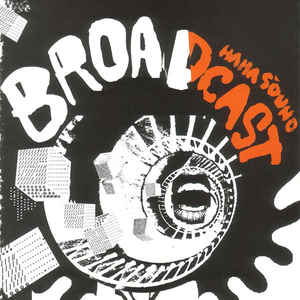Rewind: Remembering Broadcast’s ‘Haha Sound’
The avant-garde is no good without popular, and popular is rubbish without avant-garde.
— Trish Keenan of Broadcast
Broadcast is a group whose legacy lives as a lush blend of the beloved knockout melodies of 60s pop, the mystical seclusion of library music, and the ghostly ambience of sci-fi soundscapes decorated with homespun rock & roll (à la Joe Meek). The band stood out from their other psych-pop contemporaries of the late 90s and early 2000s—offering poetic, playful lyrical reflection over the political radicalism of Stereolab and a similarly soft-spoken, breezy aesthetic to The Clientele, but with a larger appetite for technical experimentation.
There’s a warm familiarity to the retro-futurist shades of Broadcast’s best work, frequently resembling buoyant, classic nursery rhymes, while simultaneously contrasting their own nostalgia with layers of psychedelic tectonics and an impish delight for creepy embellishments.
Broadcast formed in Birmingham, England in 1995 after Trish Keenan and James Cargill met at the psychedelic club, Sensateria. The two became both romantic and musical partners, and released their first single, “Accidentals,” on Wurlitzer Jukebox Records in 1996. They released their first EP, “The Book Lovers” on Duophonic Records after catching the attention of label manager (and band manager of Stereolab), Martin Pike. The group then signed to the independent electronic label, Warp Records, in 1997.
With every Broadcast release, the band executed a deliberate testing of the pop form by creating gentle, melancholic wonderlands driven by swinging rhythms, whirring synths and keyboards, and an icy delivery of tender philosophies through Trish Keenan’s vocals.
But no record in their catalogue so brilliantly captures their reach for style and splendor as “Haha Sound.” Arriving in August of 2003 — three years after their full-length debut, “The Noise Made By People” — “Haha Sound” covers more lavish and raucous instrumental territory than their other full-length releases. Featuring an array of vivacious, oscillating pop ballads with gauzy layers of distortion and enigmatic sampling, the record remains a vital piece of psychedelic artistry that has only grown in prestige during the 15 years since its release.

The recording sessions for “Haha Sound” began in the summer of 2002. The seven-year-old group would feature one of the wider iterations of performers it would encounter in its existence: Keenan and Cargill delivering vocals and bass, respectively, Roj Stevens on keyboards, Tim Felton on guitar, acclaimed studio drummer Neil Bullock behind the kit, with Phil Jenkins on drums for the track “Winter Now.”
During a recent conversation with Bullock, he fondly recounted the recording process and his contributions to “Haha Sound.” He cites three places in and around Birmingham, England as recording locations for the album and the preceding “Pendulum” EP: producer Bob Lamb’s studio (which also hosted early Duran Duran and UB40), Rich Bitch Studios, and lastly, a church hall on High Street in Kings Heath.
“The great thing about [the church] was it contained a lot of natural reverb,” Bullock says. “They tried various studios all over the country. They were just after something very particular, very special. And they managed to get what they were after in that church hall.”
Keenan and Cargill were precise in their sonic objectives and had a distinct goal to utilize their influences to help shape, rather than dominate their vision. They drew inspiration from a variety of sources: European art house cinema, Jonathan Miller’s 1966 television adaptation of “Alice in Wonderland,” and the primitive 1960s electronic rock group, The United States of America, which served as key influence for Broadcast’s work.
Prior to recording, the pair sent Bullock a variety of demos and reference music, such as Italian film soundtracks and library music.
“They were very into [Ennio] Morricone. Quite European, the sort of things they were into,” Bullock told CMN. Other reference points included Gerry Anderson’s soundtrack for “Stingray” and the Barry Gray Orchestra’s music for “Captain Scarlet” — both 1960’s British sci-fi children’s television shows.
Where Broadcast’s debut favored a more sultry approach to creating a lounge-pop soundscape, “Haha Sound” would maximize this aesthetic vision to gargantuan proportions by adding layers of knotty instrumentation and twinkling sonic embellishments. As Keenan once described it herself, “the ‘Haha Sound’ was like a jewelry box, full of sparkling things.”

Bullock’s jazz-influenced drumming frequently shines as an anchor to the “jewelry” of each track. The percussive pounding on “Pendulum” falls in step with Keenan’s spacey verses: “Can a meaning be obtained/Or this mystery explained.” The marching rhythm of “Man Is Not A Bird” ties down the velvety, sailing vocals and glimmering synths. “Black Umbrellas” and “Distortion” serve as full-stop showcases for the percussive elements of the album, punctuating the whimsy with harsh, unnerving breaks.
Gliding in harmony with the frolicking melodies is Keenan’s jaunty, self-focused lyricism and the reserved manner in which she delivers her words. Keenan never shied from the details of her upbringing; she has mentioned her mother’s prostitution and has referred to her upbringing as one in a “Cathy Come Home” England (a 1960s television drama on homelessness and the British welfare system).
“I discovered psychedelia and it seemed to have self help properties that allowed me to let go of an immobilizing working class pride that was cementing a false identity into my psyche, stopping me from transforming,” she shared with The Wire in 2009.
Throughout “Haha Sound,” she utilizes this philosophical way of interpreting psychedelia to make somber, cryptic observations. The track “Valerie” — which borrows its title from the 1970s Czech horror film “Valerie and Her Week of Wonders” — details a singsong, internal tug of identity: “Inside the mask, another disguise/I fall to sleep before closing my eyes.”
“The Little Bell” experiments with a playful filter over a darker reflection of self: “Now deep inside my wooden clock/There is a tick but not a tock/Although into the room it chimes/It only tells me half the time.”
The bouncy instrumentation paired with the repetitious contemplation of “Lunch Hour Pops” makes for a haunting blend of pop and psyche, inviting you for a dance but daring you to stay for a detached meditation:
“I wait on the stairs for a break in my mind
Let the balloons go outside
Let the balloons go outside
I wait on the stairs for my thoughts to align
You are the sun in my mind
You are the sun in my mind.”
With the enigmatic aura of whimsy that pervaded Broadcast’s music, the vulnerability and candor in their real life demeanor reveals a level of balance with reality that is only slightly shrouded. Writer Ben Cardew — who spoke with Trish Keenan in 2005 just before the release of their third album “Tender Buttons” — described Keenan as “really open and forthcoming.” He continues, “She talks about at one point how ‘nobody buys our records’ and then [she] laughed and said ‘thank you so much for taking interest,’ and I was thinking no, thank you!”
That dry temperament suggests that though she was aware of their acclaim and cult status, they operated at a distance from the industry, orbiting on their own creative plane. As Cardew put it during our conversation last month, “it wasn’t just music, Broadcast had this whole world opening up; they lived in their own little world. They didn’t particularly mind what was happening in other places.”

Two years after “Haha Sound,” Broadcast would create “Tender Buttons,” with Keenan and Cargill working as a duo. In 2006, they would release another collection of rarities and B-sides titled “The Future Crayon”, and in 2009, a collaborative album titled, “Broadcast and the Focus Group Investigate Witch Cults of the Radio Age,” with The Focus Group (whose sole member, Julian House, designed the cover art for “Haha Sound” and other Broadcast projects).
Following a tour in Australia in December of 2010, Keenan died on January 14, 2011 from complications following a case of pneumonia. Her death would leave partner and founding bandmate Cargill as the only remaining member of Broadcast.
Cargill spoke publicly for the first time later that year about her passing and the status of Broadcast’s unfinished projects with Under The Radar: “Trish left a lot of tapes, four-tracks and stuff, and I’ve been going through those. It’s difficult, and I’m connected to it at the same time. It’s wonderful, but I’m also feeling a sense of loss.”
Whether or not this unreleased material will be officially released any time soon remains to be seen. Some of Keenan’s final vocals were released as part of a soundtrack Broadcast produced for the 2012 horror film, “Berberian Sound Studio.”
In 2017, Cargill would collaborate with former Broadcast member Roj Stevens and The Focus Group’s Julian House on a project called, “Children of Alice,” a tribute to Keenan’s love for Alice in Wonderland.
It’s undeniable that there remains a Broadcast shaped hole in the post-2000s canon of indie music. But the band’s influence is clear in the ethereal, textured pop of Deerhunter, the intimate ambiance of Grouper, and the ambitious instrumental landscapes crafted by Julia Holter.
Broadcast represented a sound and an idea that’s incapable of re-creation, one that was nurtured by a love of culture, nostalgia, and eccentricity. As their cult status grows, their music will continue to open avenues for legions of fans into wormholes of art, film, and literature. With numerous creations to cherish (and the possibility for one more), the dazzling, mystical world of Broadcast is bound to be discovered and obsessed over for years to come. And “Haha Sound” is the perfect place to start.




